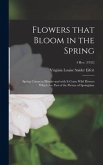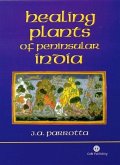Plant species which can accumulate high concentrations of heavy metals have been known for over 100 years. However, until the last 20 years their potential went largely unnoticed by scientists. The term "hyperaccumulation" was first introduced by the author (and colleagues) in 1977. This renewed interest, together with heightened environmental awareness and the discovery of the phenomenon in many more species has since stimulated research into a number of novel scientific and commercial uses. This book brings together for the first time in one volume all the relevant ecological information on hyperaccumulators and describes the new disciplines, methods and uses for them which continue to be explored. These include the removal of heavy metal pollutants from soils and waters (phytoremediation), the identification of ancient human settlements (phytoarchaeology), mineral exploration, the revegetation of degraded land and the exciting possibility of the commercial extraction of heavy metals from crop plants (phytomining). This book is essential reading for plant ecologists and physiologists who have an interest in hyperaccumulators, environmental consultants specializing in land restoration, and exploration geochemists. It will also be of great interest to professionals, lecturers and advanced students in environmental science, geology and soil science.








